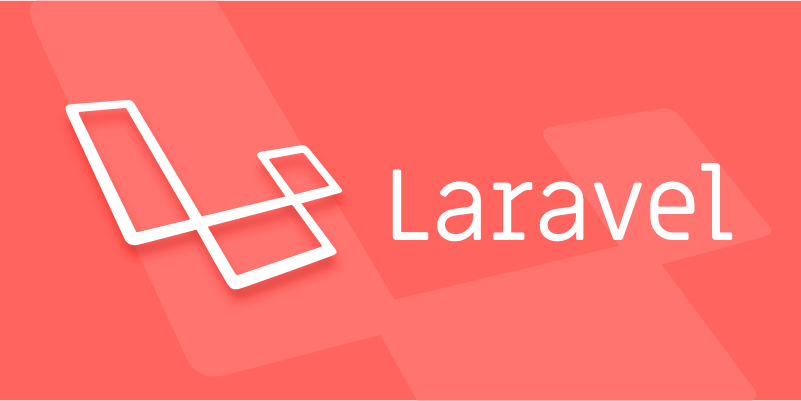How to secure a Laravel application from common vulnerabilities?
Aug 04, 2025 pm 02:19 PMThe security protection of Laravel applications needs to start from multiple levels. First, CSRF protection must be enabled, and the @csrf directive must be used in the form to ensure token verification; 2. Eloquent or Query Builder should be used to prevent SQL injection to avoid splicing native SQL input by user, and parameter binding should be used if necessary; 3. When defending against XSS attacks, the Blade template escapes the output by default, and the {!!!} that is automatically escaped is disabled for trusted content, and it is used in combination with Purifier and other libraries to purify rich text input; 4. All inputs must be processed through the Laravel verification mechanism, using the validate method or Form Request class to prevent malicious data from entering the system; 5. In terms of authentication security, Laravel's built-in Breeze, Jetstream or Fortify schemes should be used, passwords are automatically hashed, login limiting and HTTPS transmission is enabled; 6. To prevent batch assignment vulnerabilities, you need to clearly define the $fillable or $guarded attributes of the model, and it is prohibited to directly pass $request->all() to create a model; 7. The file upload function must strictly verify the type, size and extension, the storage path should be located in the storage directory and accessed through soft links, and upload files to rename to prevent path traversal; 8. Configure security response headers such as X-Content-Type-Options, X-Frame-Options, and X-XSS-Protection, and it is recommended to use the spatie/laravel-security-headers package to manage uniformly; 9. Regularly update the Laravel core and Composer/NPM dependencies, and use composer audit, Dependabot and other tools to detect known vulnerabilities; 10. In the production environment configuration, you must set APP_ENV=production, APP_DEBUG=false to generate strong APP_KEY, prohibit accessing .env and log files through the web, and enable HTTPS and set SESSION_SECURE_COOKIE=true to ensure session security. To sum up, Laravel provides comprehensive security features. The key is to correctly enable and configure these mechanisms, eliminate the risks caused by bypassing protection and incorrect configuration, and ultimately realize the overall security protection of the system.

Securing a Laravel application involves addressing common web vulnerabilities through proper configuration, coding practices, and leveraging Laravel's built-in security features. Here's how to protect your Laravel app from the most frequent threats:

1. Prevent Cross-Site Request Forgery (CSRF)
Laravel includes CSRF protection out of the box using CSRF tokens. Always ensure your forms include the @csrf directive:
<form method="POST" action="/profile">
@csrf
<!-- form fields -->
</form>- Laravel automatically verifies the token for non-read HTTP requests (POST, PUT, DELETE).
- Never disable CSRF protection unless absolutely necessary (eg, public APIs), and even then, use API token-based authentication instead.
Note : If you're building a SPA or using API routes, use Laravel Sanctum or Passport for stateful authentication with proper token handling.
2. Protect Against SQL Injection
Laravel's Eloquent ORM and Query Builder automatically use PDO parameter binding, which prevents SQL injection— as long as you don't write raw SQL queries with user input .
? Safe:

User::where('email', $request->email)->first();
? Risky:
DB::select("SELECT * FROM users WHERE email = '" . $request->email . "'");If you must use raw queries, use parameter binding:
DB::select("SELECT * FROM users WHERE email = ?", [$request->email]); Also, avoid using whereRaw , havingRaw , etc., with unescaped user input.
3. Prevent Cross-Site Scripting (XSS)
Blade templates automatically escape output using {{ }} , which helps prevent XSS:
{{ $userInput }} <!-- Escaped by default -->But be cautious with:
{!! $userInput !!} <!-- NOT escaped – only use if you trust the content --> If you allow users to submit HTML (eg, in a CMS), sanitize input using a library like mewebstudio/Purifier (Laravel Purifier) or league/commonmark with HTML sanitization.
Also, set appropriate Content-Security-Policy headers to restrict script sources.
4. Validate and Sanitize Input
Always validate incoming data using Laravel's validation features:
$request->validate([
'email' => 'required|email',
'name' => 'required|string|max:255',
]); Use validation rules like sanitized where needed, and avoid mass-assigning user input without defining $fillable or $guarded in models.
- Use form request validation for complex logic:
php artisan make:request UpdateProfileRequest
5. Secure Authentication and Passwords
Laravel provides secure authentication scaffolding (via Laravel Breeze, Jetstream, or Fortify). Ensure you:
- Hash passwords using
bcrypt()orHash::make()(Laravel does this by default). - Enforce strong passwords via validation.
- Enable rate limiting on login (built into Laravel).
- Use HTTPS in production to prevent credential sniffing.
- Consider multi-factor authentication (MFA) using Laravel Fortify or custom implementation.
Also, never log or store plain-text passwords or sensitive input.
6. Protect Against Mass Assignment
Avoid using ::create() or ::update() with raw request data:
? Risky:
User::create($request->all());
? Safe:
User::create($request->only('name', 'email'));
Or define $fillable or $guarded attributes in your model to control mass assignment.
7. Secure File Uploads
If allowing file uploads:
- Validate file type, size, and extension:
$request->validate([ 'avatar' => 'required|image|max:2048', ]);
- Store files in
storage/app/publicand serve via symbolic links (php artisan storage:link). - Avoid executing uploaded files by placing them outside the public directory when possible.
- Rename files to prevent path traversal or overwrites.
8. Set Proper Headers and Security Middleware
Use middleware to enforce security headers:
Install a package like spatie/laravel-security-headers or manually add headers in middleware:
// In middleware or RouteServiceProvider $response->headers->set('X-Content-Type-Options', 'nosniff'); $response->headers->set('X-Frame-Options', 'DENY'); $response->headers->set('X-XSS-Protection', '1; mode=block');
Also consider using CSP, HSTS, and Referrer-Policy headers.
9. Keep Dependencies Updated
Regularly update Laravel and all Composer/NPM dependencies:
composer update npm update
Use tools like:
-
composer audit(orroave/security-advisories) - Laravel Shift to automate upgrades
- Dependabot or Renovate for automated dependency monitoring
10. Environment and Configuration Security
- Set
APP_ENV=productionandAPP_DEBUG=falsein.envon live servers. - Never commit
.envto version control. - Use strong
APP_KEY(generate withphp artisan key:generate). - Restrict access to
storage/logsand.envvia web server configuration.
Bonus: Use HTTPS and Secure Cookies
- Force HTTPS in production:
// AppServiceProvider boot() URL::forceScheme('https');
- Set
SESSION_SECURE_COOKIE=truein.envto send cookies over HTTPS only.
Basically, Laravel gives you strong tools out of the box—just use them correctly. Most vulnerabilities come from bypassing built-in protections or misconfigurations, not Laravel itself. Stay cautious with user input, keep things updated, and follow security best practices.
The above is the detailed content of How to secure a Laravel application from common vulnerabilities?. For more information, please follow other related articles on the PHP Chinese website!

Hot AI Tools

Undress AI Tool
Undress images for free

Undresser.AI Undress
AI-powered app for creating realistic nude photos

AI Clothes Remover
Online AI tool for removing clothes from photos.

Clothoff.io
AI clothes remover

Video Face Swap
Swap faces in any video effortlessly with our completely free AI face swap tool!

Hot Article

Hot Tools

Notepad++7.3.1
Easy-to-use and free code editor

SublimeText3 Chinese version
Chinese version, very easy to use

Zend Studio 13.0.1
Powerful PHP integrated development environment

Dreamweaver CS6
Visual web development tools

SublimeText3 Mac version
God-level code editing software (SublimeText3)
 Working with pivot tables in Laravel Many-to-Many relationships
Jul 07, 2025 am 01:06 AM
Working with pivot tables in Laravel Many-to-Many relationships
Jul 07, 2025 am 01:06 AM
ToworkeffectivelywithpivottablesinLaravel,firstaccesspivotdatausingwithPivot()orwithTimestamps(),thenupdateentrieswithupdateExistingPivot(),managerelationshipsviadetach()andsync(),andusecustompivotmodelswhenneeded.1.UsewithPivot()toincludespecificcol
 Sending different types of notifications with Laravel
Jul 06, 2025 am 12:52 AM
Sending different types of notifications with Laravel
Jul 06, 2025 am 12:52 AM
Laravelprovidesacleanandflexiblewaytosendnotificationsviamultiplechannelslikeemail,SMS,in-appalerts,andpushnotifications.Youdefinenotificationchannelsinthevia()methodofanotificationclass,andimplementspecificmethodsliketoMail(),toDatabase(),ortoVonage
 Understanding Dependency Injection in Laravel?
Jul 05, 2025 am 02:01 AM
Understanding Dependency Injection in Laravel?
Jul 05, 2025 am 02:01 AM
Dependency injection automatically handles class dependencies through service containers in Laravel without manual new objects. Its core is constructor injection and method injection, such as automatically passing in the Request instance in the controller. Laravel parses dependencies through type prompts and recursively creates the required objects. The binding interface and implementation can be used by the service provider to use the bind method, or singleton to bind a singleton. When using it, you need to ensure type prompts, avoid constructor complications, use context bindings with caution, and understand automatic parsing rules. Mastering these can improve code flexibility and maintenance.
 Strategies for optimizing Laravel application performance
Jul 09, 2025 am 03:00 AM
Strategies for optimizing Laravel application performance
Jul 09, 2025 am 03:00 AM
Laravel performance optimization can improve application efficiency through four core directions. 1. Use the cache mechanism to reduce duplicate queries, store infrequently changing data through Cache::remember() and other methods to reduce database access frequency; 2. Optimize database from the model to query statements, avoid N 1 queries, specifying field queries, adding indexes, paging processing and reading and writing separation, and reduce bottlenecks; 3. Use time-consuming operations such as email sending and file exporting to queue asynchronous processing, use Supervisor to manage workers and set up retry mechanisms; 4. Use middleware and service providers reasonably to avoid complex logic and unnecessary initialization code, and delay loading of services to improve startup efficiency.
 Managing database state for testing in Laravel
Jul 13, 2025 am 03:08 AM
Managing database state for testing in Laravel
Jul 13, 2025 am 03:08 AM
Methods to manage database state in Laravel tests include using RefreshDatabase, selective seeding of data, careful use of transactions, and manual cleaning if necessary. 1. Use RefreshDatabasetrait to automatically migrate the database structure to ensure that each test is based on a clean database; 2. Use specific seeds to fill the necessary data and generate dynamic data in combination with the model factory; 3. Use DatabaseTransactionstrait to roll back the test changes, but pay attention to its limitations; 4. Manually truncate the table or reseed the database when it cannot be automatically cleaned. These methods are flexibly selected according to the type of test and environment to ensure the reliability and efficiency of the test.
 Choosing between Laravel Sanctum and Passport for API authentication
Jul 14, 2025 am 02:35 AM
Choosing between Laravel Sanctum and Passport for API authentication
Jul 14, 2025 am 02:35 AM
LaravelSanctum is suitable for simple, lightweight API certifications such as SPA or mobile applications, while Passport is suitable for scenarios where full OAuth2 functionality is required. 1. Sanctum provides token-based authentication, suitable for first-party clients; 2. Passport supports complex processes such as authorization codes and client credentials, suitable for third-party developers to access; 3. Sanctum installation and configuration are simpler and maintenance costs are low; 4. Passport functions are comprehensive but configuration is complex, suitable for platforms that require fine permission control. When selecting, you should determine whether the OAuth2 feature is required based on the project requirements.
 Implementing Database Transactions in Laravel?
Jul 08, 2025 am 01:02 AM
Implementing Database Transactions in Laravel?
Jul 08, 2025 am 01:02 AM
Laravel simplifies database transaction processing with built-in support. 1. Use the DB::transaction() method to automatically commit or rollback operations to ensure data integrity; 2. Support nested transactions and implement them through savepoints, but it is usually recommended to use a single transaction wrapper to avoid complexity; 3. Provide manual control methods such as beginTransaction(), commit() and rollBack(), suitable for scenarios that require more flexible processing; 4. Best practices include keeping transactions short, only using them when necessary, testing failures, and recording rollback information. Rationally choosing transaction management methods can help improve application reliability and performance.
 Handling HTTP Requests and Responses in Laravel.
Jul 16, 2025 am 03:21 AM
Handling HTTP Requests and Responses in Laravel.
Jul 16, 2025 am 03:21 AM
The core of handling HTTP requests and responses in Laravel is to master the acquisition of request data, response return and file upload. 1. When receiving request data, you can inject the Request instance through type prompts and use input() or magic methods to obtain fields, and combine validate() or form request classes for verification; 2. Return response supports strings, views, JSON, responses with status codes and headers and redirect operations; 3. When processing file uploads, you need to use the file() method and store() to store files. Before uploading, you should verify the file type and size, and the storage path can be saved to the database.







